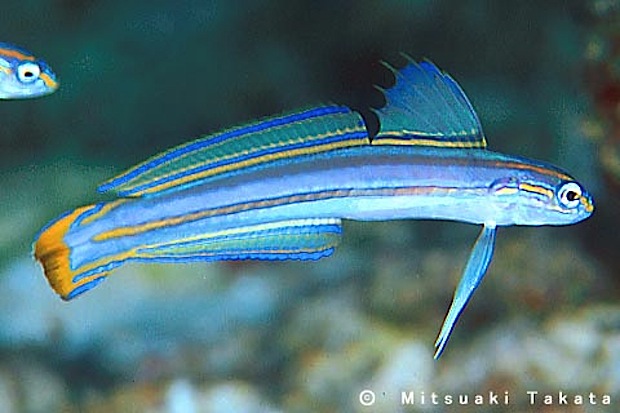Ptereleotris, commonly known as wormfishes or dartfishes, is a genus well represented in the aquarium hobby. With over half a dozen colorful, peaceful and affordable species to choose from, these wormlike pseudo-gobies make for a great addition to any reef tank.
The usual aquarium suspects are P. zebra, P. heteroptera, P. evides, P. hanae and occasionally P. microlepis. The list goes on, with many more species of progressing rarity. Of all the available Ptereleotris however, none is more beautiful than the illustrious P. grammica (Lined Dartfish).

P. grammica has a scattered range across multiple reefs in the Pacific. It is most commonly exported out of the Philippines, where its appearance is rare and sporadic at best. They are never collected in large quantities like the ubiquitous P. zebra, and when in “season”, multiple specimens often show up all over before vanishing again until the end of its hiatus.
Like the other members of this genus, lined dartfish can be kept in a small group and does better in this setting. They can be very shy initially and may take some time to start feeling comfortable in a reef tank. A small group of the same species, along with other peaceful dither fish may help with the acclimation process.

A sister representative of this species lives in the Indian Ocean; more specifically, Maldives and Mauritius. Long thought to be synonymous and just a subspecies of P. grammica, the Indian Ocean species has been awarded species rank, and is now known as Ptereleotris melanota. P. melanota is exceedingly rare in the trade and only a tiny number has ever been seen in Asian markets. Fortunately, it is less colorful than its Pacific Ocean counterpart, which can be obtainable given time.

If you like the charming characteristics of the Ptereleotris dartfishes but want something rarer, then keep an eye out for the Lined Dartfish. They are not easy to get but with patience, you will eventually be able to show off your new dartfish as it resides in your tank. We end this little spotlight with two videos of this fish in the wild.



